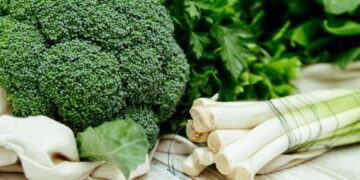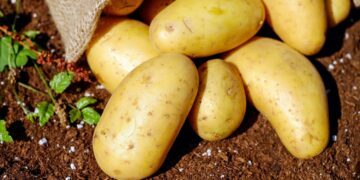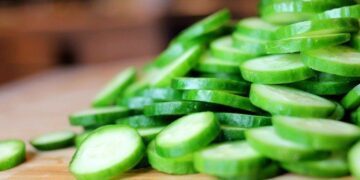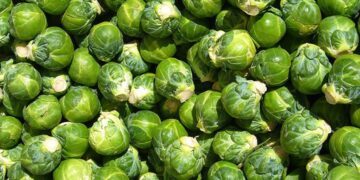Thanks to Popeye the Sailor Man, we know spinach is a great source of nutrition that keeps us strong!
But there are so many more health benefits to it that you probably are unaware of.
Not to mention, we’ll tell you the best possible way to consume spinach so you get the most out of all the vitamins packed in this superfood!
We know cucumbers are almost entirely water – but did you know spinach is also mostly water? Raw spinach is 91% water, which is just 5% less than cucumbers!
If you were to compare 100 grams of spinach to 100 grams of ground hamburger patty, you would find more iron in the spinach than you would in the hamburger patty. To be exact, there would be 3.57 mg of iron in the spinach, and 2.49 mg of iron in the patty.
The country with the world’s highest production of spinach is China, which grows around 26 million tons of spinach per year – that’s about 92% of the world’s production!
In the U.S. alone, California is the top supplier of spinach accounting for almost 75% of the nation’s production.
Spinach originated from ancient Persia and wasn’t introduced in China until the 7th Century. Today, it is still commonly known in China as the “Persian Green.”
Is spinach your favorite veggie? Celebrate this leafy green on March 26th which is National Spinach Day!
Spinach farmers of the 1930s credited the fame of Popeye the Sailorman for a 33% boost in spinach consumption which was much needed during The Great Depression.
In the medieval days, artists used to extract green pigment from spinach to use as ink or paint.
Even though it is packed full of nutrients, spinach has high levels of oxalate which basically prevents your body from absorbing iron.
In order to avoid the negative effect of oxalates, boiling raw spinach will get rid of most of the oxalic acid!
Unlike most veggies, cooking spinach intensifies the health benefits. Half a cup of cooked spinach will grant you threefold the nutrition as one cup of raw spinach.
If you want to take it a step further, liquefying fresh spinach is the absolute best way to consume spinach – doing this releases beta-carotene stored in the leaves which enables your body to absorb the nutrients even easier than boiling it.
There’s a fairly small window in which you can eat your fresh spinach. After the 8th day of it being picked, spinach loses half of its major nutrients when it’s refrigerated.
The first company to ever advertise frozen spinach was “Birds Eye” in Life magazine in 1949.
Spinach is packed full of antioxidants which helps fight oxidative stress.
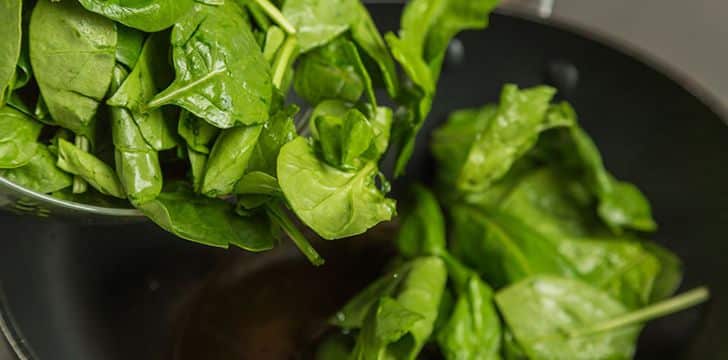
Other health benefits include helping eye health, cancer prevention, and reduced levels of blood pressure.
Half a cup of spinach accounts for 1 of the 5 servings of fruits and vegetables that you should eat per day.
Even though they look nothing alike, spinach is a relative of beets!
Thylakoids of the spinach cells are what give spinach its green color. These have been found to help satiate appetites, which can help in weight loss. Eat some spinach before a meal if you’re watching your waistline if you want to try to eat less!
Another reason spinach is great to eat while you’re watching your weight – there are only 23 calories in 100 grams of spinach!
There is a surprising downside to spinach. It contains high amounts of vitamin K1 which may sound good, but it can cause blood clotting, and can therefore interfere with any medication that causes blood thinning.
The other negative aspect of spinach is that the oxalates found in spinach can cause kidney stones in those who are sensitive or intolerant of oxalates.
Back to the positives! There are 15 different vitamins and minerals that are crucial for prime health.
Some of these vitamins and minerals are also beneficial to your skin, bringing relief from dry, itchy skin with its healing properties.
During World War I, wine was reinforced with spinach juice and given to hemorrhaging French soldiers. The idea was to utilize the high volume of vitamin K in spinach to thicken their blood and improve their situation.
There are only 3 different types of spinach – savoy spinach, flat-leaf spinach, and semi-savoy spinach.
Due to the high amounts of iron in spinach, it’s highly beneficial to your hair. Hair loss is a result of iron deficiency, so spinach will help combat that problem!
Believe it or not, there is more potassium in spinach than there is in bananas. Potassium helps with digestion and muscular functions.
The health benefits of spinach never seem to end! The magnesium in spinach can lower your risk of type 2 diabetes by about 14% if you eat just over a cup of spinach every day.
The levels of Vitamin C and collagen in spinach are perfect for nail health to keep them growing strong and avoiding those annoying hangnails.
Now that you know all of the amazing health rewards of spinach, do you think you’ll try to add more of these greens into your diet?
Maybe it’s even a better idea to plant some in your garden for immediate benefits to your body, straight from the garden to your dinner plate!


